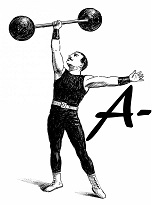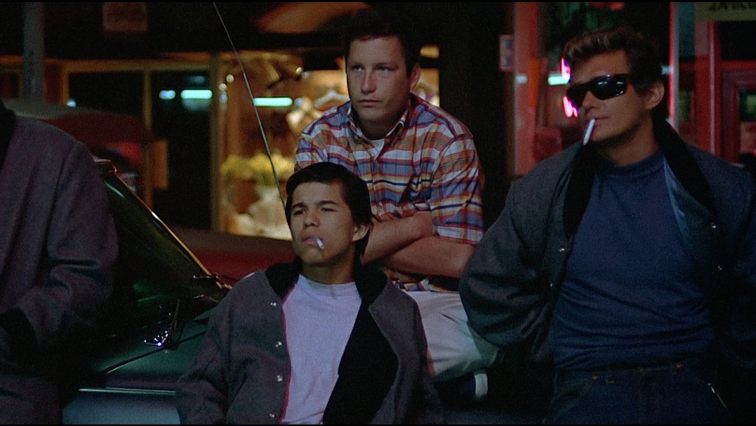Before making billions with the “Star Wars” franchise, filmmaker George Lucas dropped his historic coming of age gem “American Graffiti.”
Released in 1973, “American Graffiti” serves as Lucas paying homage to his own baby boomer generation; specifically those born in the years immediately following World War 2.
Set in the span of a single night in the summer of 1962, “Graffiti” follows an ensemble group of friends as they are each preparing to embark on lofty future plans and expectations. The movie serves as a perfect bit of nostalgia and a final hoorah for the yesteryear fondness of the 50s, as the turmoil of Vietnam, JFK, and the counterculture revolution were just around the corner, albeit unknown at the time to those partaking in the present.
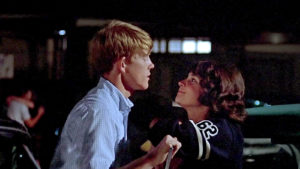
“You can’t stay 17 forever.” Steve (Ron Howard) barks at friend Curt (Richard Dreyfuss) as they discuss their final night in Modesto, CA before leaving for college in the morning. The opening scene occurs outside of a quintessential diner, and with “Rock Around the Clock” blasting from car radios, you know you are in for a throwback treat. Youthful Howard and Dreyfuss lead the cast, which also includes big names like Harrison Ford and Suzanne Somers.
One of the more interesting facets of an older film like this, is seeing stars before they were well known for future endeavors. Ron Howard, who has since gone on to an Academy Award winning career behind the camera, looks like a perfect soda pop kid from the 50s. So does his girlfriend Laurie (Cindy Williams) and its not a wonder both would go on to star in television shows that are based in the 1950s: Howard with ‘Happy Days’ and Williams in ‘Laverne & Shirley.’
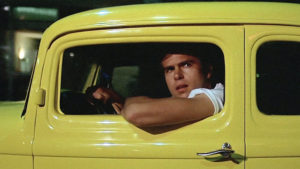 Richard Dreyfuss would have his first real staring role in this film, and does a perfect job in the role of Curt; a quiet sort who spends the long hours of the night chasing after a mysterious blonde woman, rubbing shoulders with a hysterical gang of greasers, and trying to figure out if college is the right move for him. Dreyfuss would go on the stardom just two years later in “Jaws.”
Richard Dreyfuss would have his first real staring role in this film, and does a perfect job in the role of Curt; a quiet sort who spends the long hours of the night chasing after a mysterious blonde woman, rubbing shoulders with a hysterical gang of greasers, and trying to figure out if college is the right move for him. Dreyfuss would go on the stardom just two years later in “Jaws.”
Harrison Ford is a bit player in “American Graffiti,” cruising the streets as the reckless, cowboy hat wearing Bob Falfa. But it was his work in this picture that would bring George Lucas calling a few years later when casting for Han Solo began.
“Graffiti” is a humorous film in its tone, as its cast is a ragtag group of late teens embarking on a typical night of cruising around aimlessly, looking for women, and getting into trouble. The undeniably cool John Milner (Paul Le Mat) is particularly effective as a stud who lands an unusual passenger in the form of a 12 year old girl (Mackenzie Phillips). The pair form a memorable bond over the course of the evening, and together shine in one of the best scenes in the movie, which is ironically played out with Chuck Berry’s iconic song ‘Johnny B Goode’ – foreshadowing the scene from “Back to the Future” a decade later.
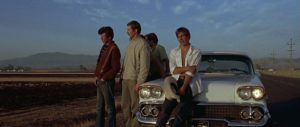
“American Graffiti” is clearly a tribute Lucas is paying to his favorite time period. Lucas himself was born in 1944, making him the same age as the characters in the movie – becoming legal adults in 1962. The soundtrack is filled with popular era gems, and Lucas intentionally chose different songs specific to each vignette. Like it was on a summer night in the past, the radio plays an integral role to the story, as well as the voice of legendary disc jockey Wolfman Jack, who broadcasts throughout the night.
Like classic movies “After Hours,” “License to Drive,” or “Adventures in Babysitting,” “American Graffiti” takes place over the course of a single night. Its Americana at its finest, and a great pioneer film to the legacy of cinema.
by – Matt DeCristo

